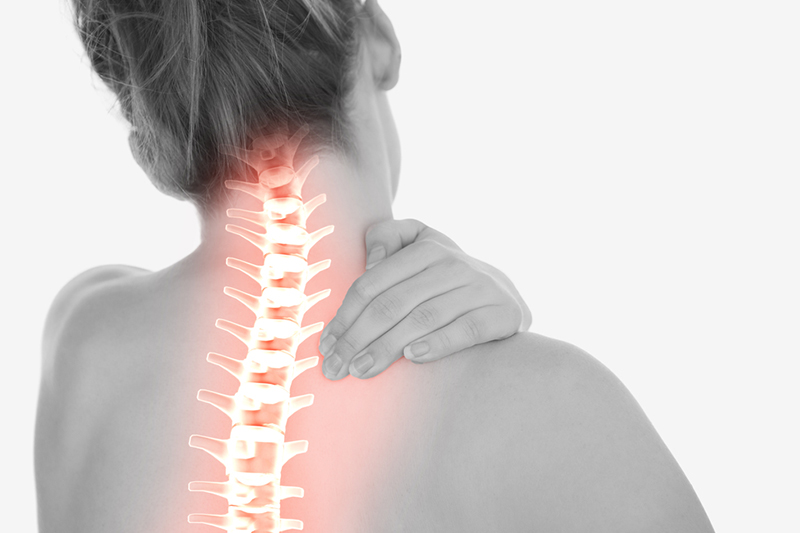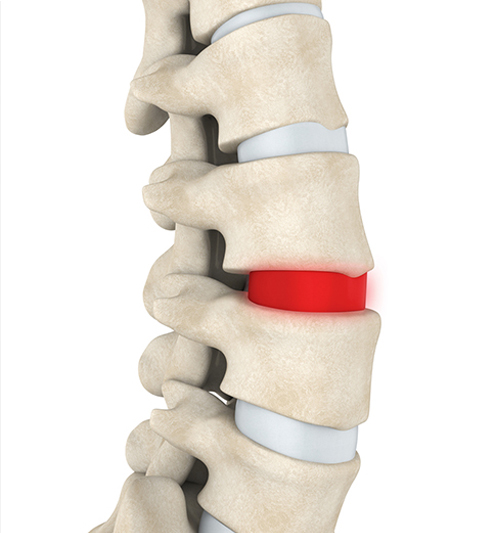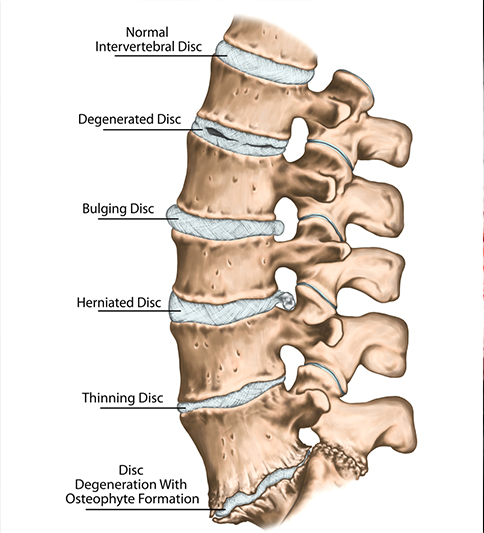Discogenic Neck Pain / Degenerative Disc Disease

The human spine is made up of vertebrae (bones) that are stacked on top of each other. Each segment is connected in the front by an intervertebral disc and in the back by small facet joints. The discs act like shock absorbers in the spine and allow the vertebrae to bend and twist relative to one another. Damage to one or more of these discs can lead to a painful condition referred to as discogenic pain.
Causes of Discogenic Neck Pain and Degenerative Disc Disease
There are various causes of discogenic neck pain, but most commonly it is caused by trauma or degeneration (wear and tear).
In cases of trauma, such as in a car accident or sports injury, there can be damage or inflammation to the outer layers of the disc leading to disc herniations, bulges, extrusion, prolapse etc. This damage and deformation can cause swelling and pain in the neck itself, or cause irritation or compression of a nerve which may result in Cervical Radiculopathy or Cervical Spinal Stenosis.

Often times discogenic pain may be a result of wear and tear, drying out, and shrinking of the disc over time. In that case it is referred to as degenerative disc disease.
As the process is a slow and gradual decline of the integrity of the disc, degenerative disc disease is often not painful in and of itself, but rather can cause other painful conditions due to the change in the structure and function of the spine. The disc can be gradually pushed into the spinal canal causing Cervical Radiculopathy or Cervical Spinal Stenosis. As the discs between the vertebrae shrink, it places greater forces on the facet joints in the back of the spine, causing the bones to rub against each other during spinal movement. This can lead to conditions like Cervical Facet Syndrome and Cervical Spondylosis.

Symptoms of Discogenic Pain
- Neck pain with lifting, bending, twisting, or sitting.
- Relief from pain with certain activities or changing positions
- Pain in the neck, upper back, or shoulders
- Intermittent numbness or tingling in the arms
Diagnosis and Treatment
The doctor will start by taking a detailed history and performing a thorough physical exam of the spine. Various diagnostic testing such as X-ray, MRI, or CT scans may be utilized to gain a better understanding of the location and severity of the problem. At times, a provocative discogram or discography may be recommended which can help establish the diagnosis. The doctor will also rule out other conditions such as Cervical Facet Syndrome or Cervical Spinal Stenosis that can produce similar symptoms.
Treatment for Discogenic Neck Pain often starts with conservative measures such as therapy, a home exercise program, bracing and/or anti-inflammatory medications. If these treatments fail, non-operative therapies such as epidurals, Regenerative Medicine techniques, and Radiofrequency Ablation may be recommended.
At Orthopedic Pain Institute, we will develop a highly specialized plan to treat your individualized needs. Schedule your consultation today to learn more about Discogenic Neck Pain and Degenerative Disc Disease, and how we can help you get back to what you love!


